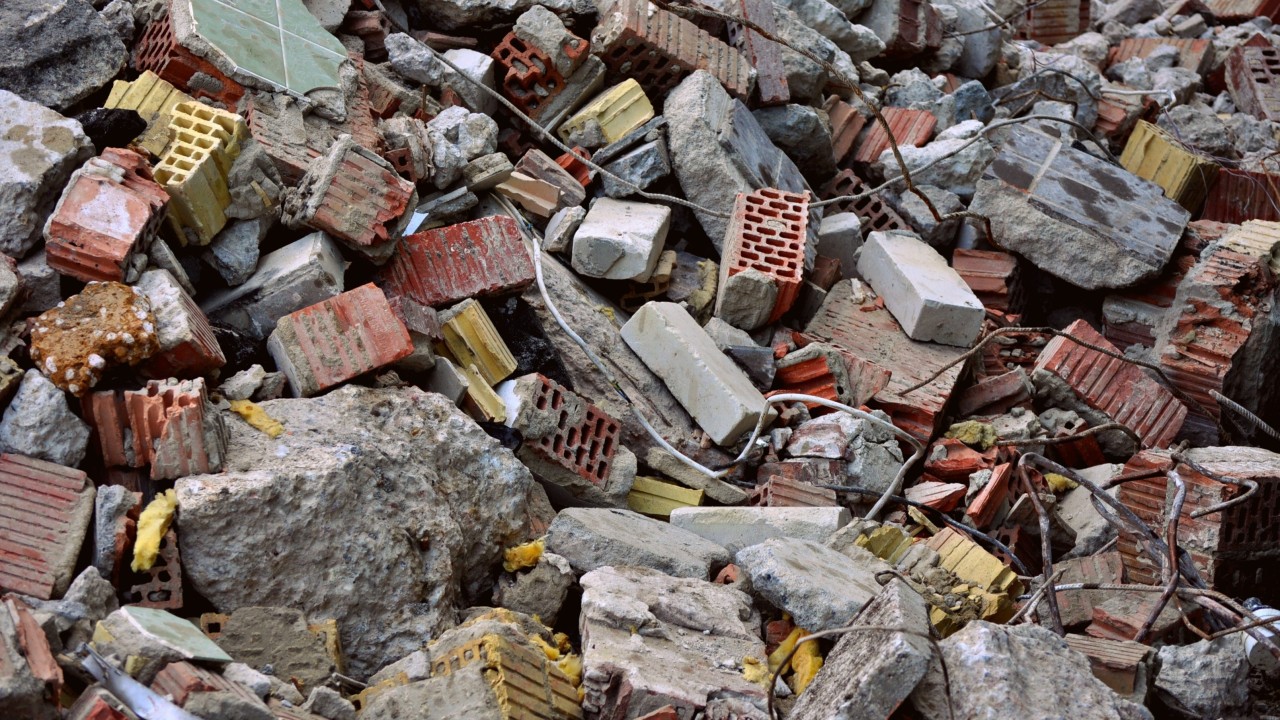The Challenge of Construction Waste Recycling
Although it may not seem so at first glance, recycling construction and demolition waste (CDW) is a highly complex technological process. It requires advanced processing equipment, compliance with strict legislation, and efficient logistics.
The first crucial step is thorough separation of materials — glass, plastics, metals, wood, and similar components must be sorted out individually for further processing.
Next comes the handling of concrete, bricks, asphalt, and other materials, while ensuring the absence of hazardous substances, which must be disposed of separately in accordance with regulations.
As in other recycling sectors, the process must be economically viable. The resulting recyclate must not only meet all technical and quality standards, but also be marketable.
When material recovery isn’t feasible, energy recovery (e.g., incineration with energy utilization) is recommended.
Growing landfill shortages and rising prices of natural aggregates make construction waste recycling both an ecological and economic necessity.
How Construction and Demolition Waste Is Recycled
If we exclude components that can be processed separately (metals, plastics, glass, wood, etc.), what remains is mixed demolition waste — a challenging and heterogeneous material stream.
This waste can be processed in two main ways:
- Mobile recycling plants, or
- Stationary recycling plants.
Mobile Recycling Lines
Mobile recycling units are used either directly at the recycling company’s facility or off-site — typically at construction waste depots where materials are delivered by smaller waste producers.
In some cases, they are deployed directly at demolition sites to reduce transport costs.
In the Czech Republic, approximately 35% of all reported CDW is processed using mobile recycling plants.
Stationary Recycling Lines
Stationary systems are more technologically advanced.
They include crushers, screens, separators, and belt conveyors.
The process usually looks like this:
- Primary jaw crusher breaks down large material.
- Magnetic separator removes iron elements.
- Vibrating screens and secondary crushers refine the fractions.
- Water or air separators remove lightweight impurities.
The final product is a high-quality washed aggregate suitable for reuse.
Applications of Recycled Construction Waste
It’s worth noting that this isn’t “recycling” in the traditional sense — old bricks don’t become new bricks, and crushed concrete doesn’t turn into fresh concrete.
Instead, the recycled materials serve as secondary construction resources, mainly for sub-base and backfill use.
Concrete Recyclate
- Used as backfill material,
- For reinforcement and stabilization layers,
- Railway ballast,
- Replacement for sand and gravel in pipe bedding,
- Road and parking lot foundations.
Quality depends on the source material.
Brick Recyclate
- Used in sports surfaces (clay courts),
- As aggregate for construction blocks,
- Or as backfill and substructure material.
Asphalt Recyclate
- Obtained by milling or breaking asphalt surfaces,
- Reused in low-traffic roads, bike paths, and noise barriers.
Excavated Soil
- Often reused for land leveling —
- technically not waste, but a valuable resource.
Construction Waste Recycling in Slovakia
Slovakia’s system is similar to that of the Czech Republic but generally less developed.
According to the Ministry of Environment of the Slovak Republic, the recycling rate of construction and demolition waste remains relatively low, though it is gradually improving.
There is increasing legislative pressure to boost recycling rates and modernize processing infrastructure.
Slovakia also participates in EU programs promoting the circular economy in construction.
Significant potential lies in:
- Modernizing recycling technologies,
- Strengthening collaboration between construction firms, municipalities, and waste processors, and
- Implementing digital and return systems for improved efficiency.
How Modern Technologies and ERP Support Recycling
Modern technologies — especially ERP systems enhanced with artificial intelligence — are becoming key tools for efficient waste management in construction.
ERP (Enterprise Resource Planning) systems unify business processes and, when integrated with AI, become powerful instruments for optimizing waste operations.
One example is ERP Helios, which offers solutions tailored to the needs of construction and recycling companies.
Through AI integration, Helios enables:
- Automatic waste tracking and monitoring
- Tracks waste flow and volume in real time, detecting inconsistencies or anomalies using AI.
- Efficient planning and logistics
- Optimizes collection, transport, and recycling capacity allocation through data analysis.
- Predictive maintenance of recycling equipment
- Monitors machinery condition to prevent breakdowns and downtime.
- Regulatory compliance and reporting
- Automatically generates waste reports and ensures compliance with Slovak and Czech legislation.
- Economic performance analysis
- Uses AI to evaluate material input/output ratios and calculate cost-effectiveness of recycling processes.
Conclusion
Implementing systems like Helios ERP brings construction and recycling companies greater transparency, cost savings, and operational control.
By interconnecting departments, automating repetitive tasks, and leveraging AI-driven insights, businesses can focus more on strategy, innovation, and sustainability.
Modern ERP solutions thus help transform construction and demolition waste recycling from a regulatory necessity into a strategic opportunity for growth and environmental responsibility.

